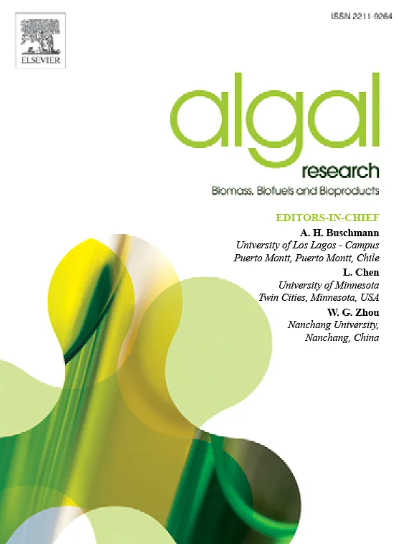利用量子化学描述符预测对小头蛇的化学毒性
IF 4.6
2区 生物学
Q1 BIOTECHNOLOGY & APPLIED MICROBIOLOGY
Algal Research-Biomass Biofuels and Bioproducts
Pub Date : 2025-04-18
DOI:10.1016/j.algal.2025.104055
引用次数: 0
摘要
绿藻类Raphidocelis subcapitata是毒性研究中重要的模式生物。本文首次利用43个量子化学描述符和随机森林算法,建立了Raphidocelis subcapitata毒性(pEC50和pEC10)的分类模型。两种毒性分类模型pEC50和pEC10对训练集(251种有机物)的预测准确率均为100%,对测试集(83种有机物)的预测准确率均在90%以上。所选择的量子化学描述符包括原子电荷、多极矩、前沿轨道能量和动能、极化率和热化学性质。它们与反应位置、亲电性和亲核性、化学键形成、氢键和静电力有关。这两种基于足够大样本集的分类模型为评估有机物对小头Raphidocelis的毒性类别提供了重要的工具。本文章由计算机程序翻译,如有差异,请以英文原文为准。
Predicting chemical toxicity towards Raphidocelis subcapitata with quantum chemical descriptors
The green alga Raphidocelis subcapitata is an important model organism in toxicity studies. This paper, for the first time, reported classification models for Raphidocelis subcapitata toxicities (pEC50 and pEC10), by applying 43 quantum chemical descriptors and the random forest algorithm. Both classification models for the toxicities pEC50 and pEC10 have prediction accuracy values of 100 % for the training set (251 organics) and above 90 % for the test set (83 organics). The quantum chemical descriptors selected include atomic charges, multipole moments, frontier orbital energies and kinetic energies, polarizability and thermochemistry properties. They are related to reaction sites, electrophilic and nucleophilic reactivity, chemical bond formation, hydrogen bonds and electrostatic force. The two classification models based on a sufficiently large sample set provide an important tool for assessing the toxicity categories of organics towards Raphidocelis subcapitata.
求助全文
通过发布文献求助,成功后即可免费获取论文全文。
去求助
来源期刊

Algal Research-Biomass Biofuels and Bioproducts
BIOTECHNOLOGY & APPLIED MICROBIOLOGY-
CiteScore
9.40
自引率
7.80%
发文量
332
期刊介绍:
Algal Research is an international phycology journal covering all areas of emerging technologies in algae biology, biomass production, cultivation, harvesting, extraction, bioproducts, biorefinery, engineering, and econometrics. Algae is defined to include cyanobacteria, microalgae, and protists and symbionts of interest in biotechnology. The journal publishes original research and reviews for the following scope: algal biology, including but not exclusive to: phylogeny, biodiversity, molecular traits, metabolic regulation, and genetic engineering, algal cultivation, e.g. phototrophic systems, heterotrophic systems, and mixotrophic systems, algal harvesting and extraction systems, biotechnology to convert algal biomass and components into biofuels and bioproducts, e.g., nutraceuticals, pharmaceuticals, animal feed, plastics, etc. algal products and their economic assessment
 求助内容:
求助内容: 应助结果提醒方式:
应助结果提醒方式:


